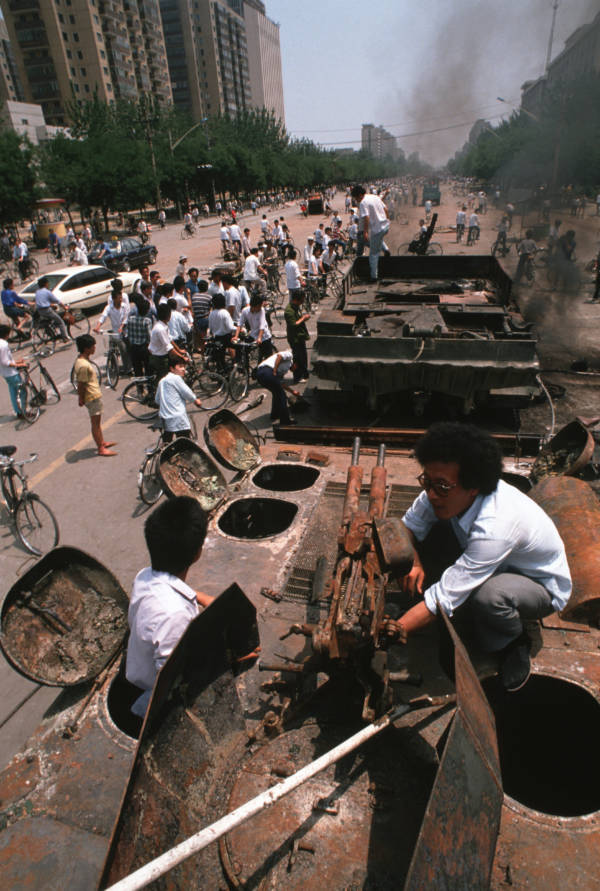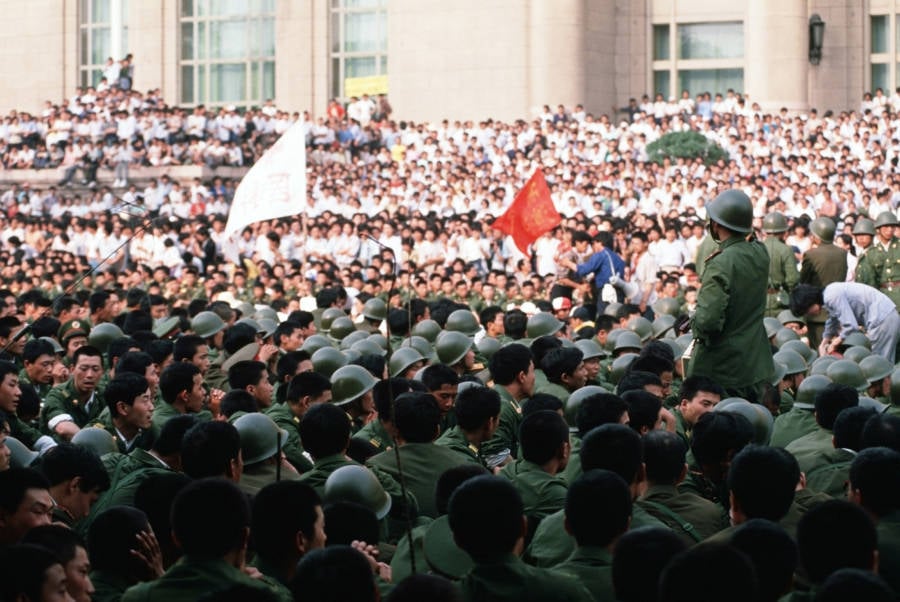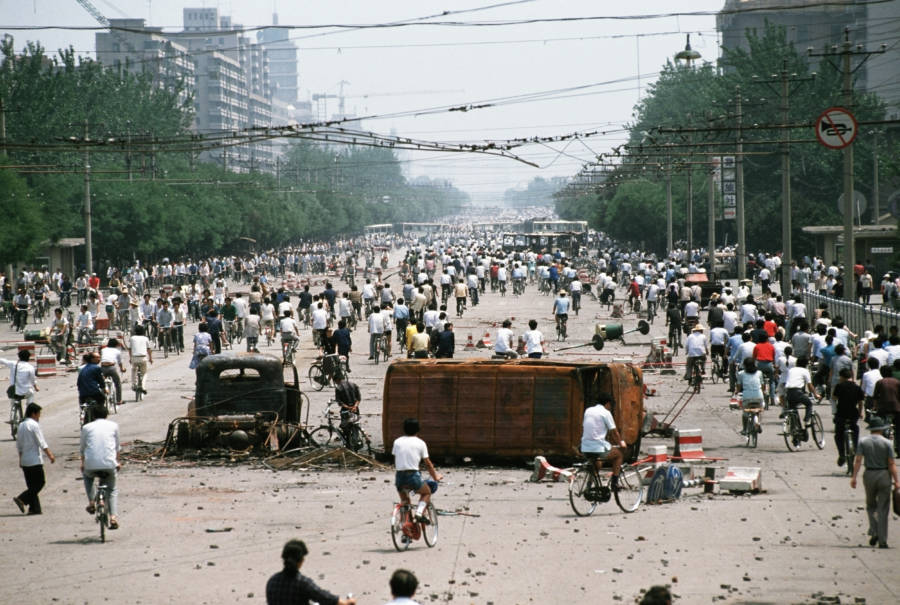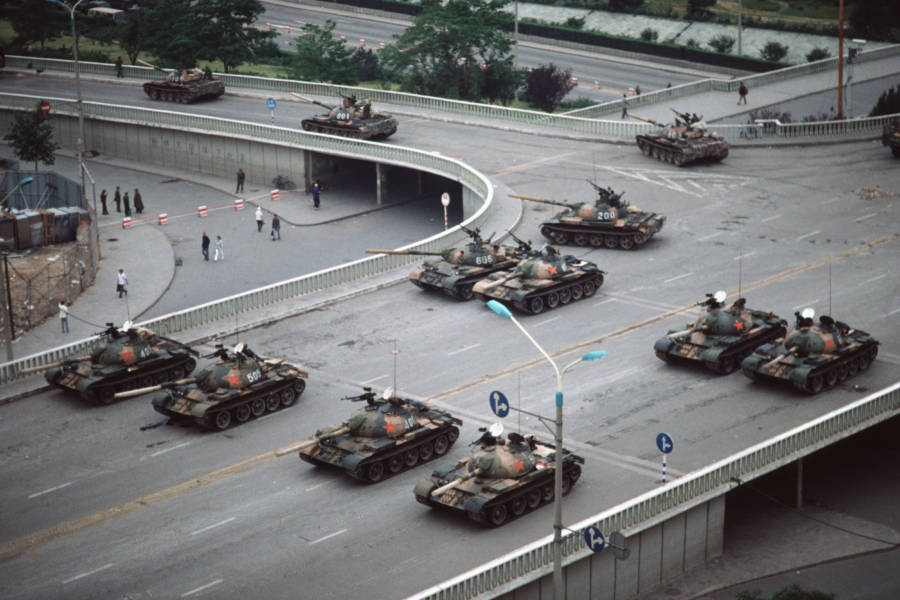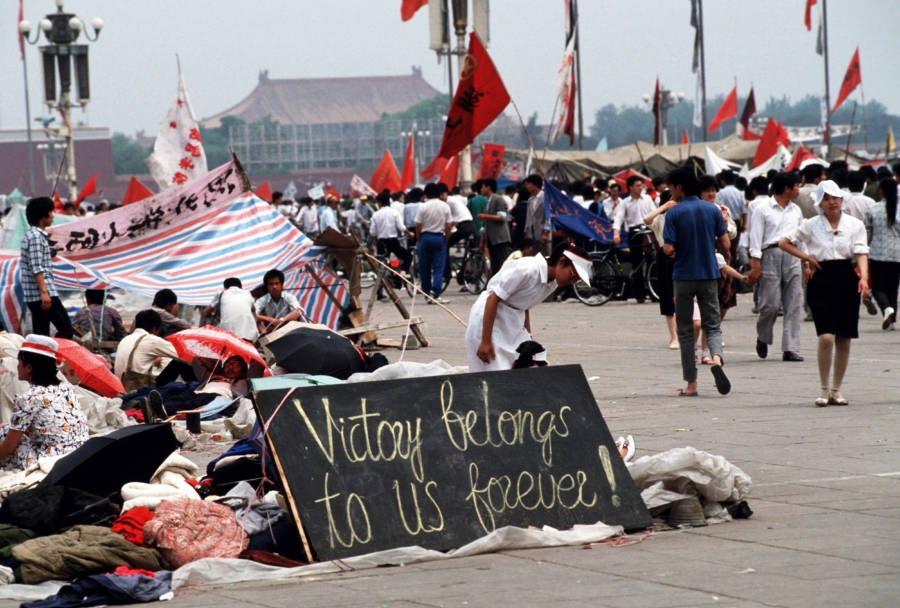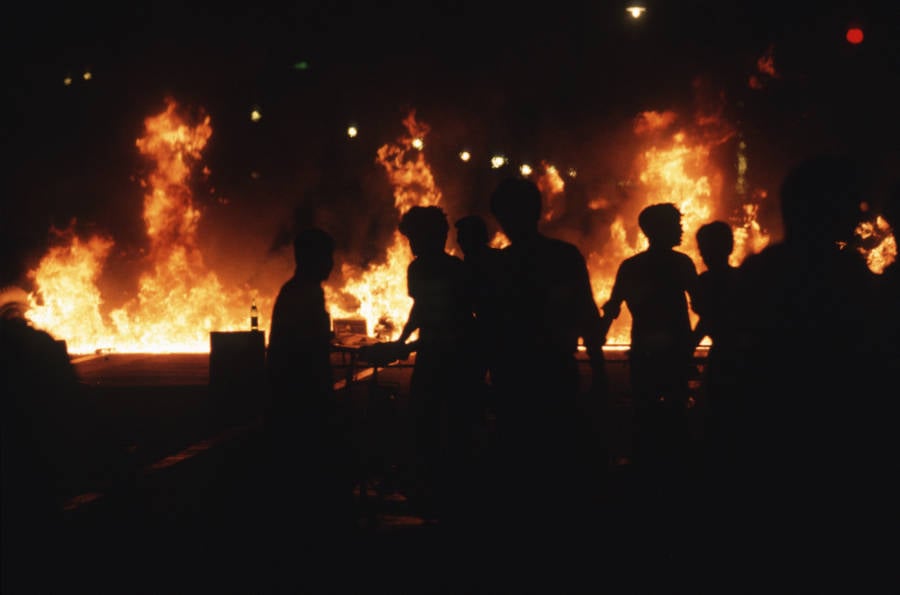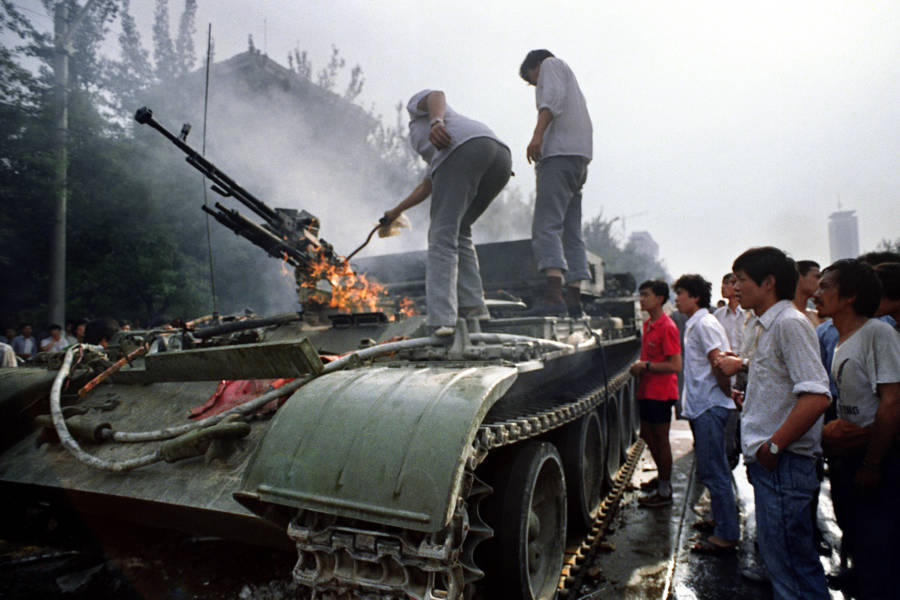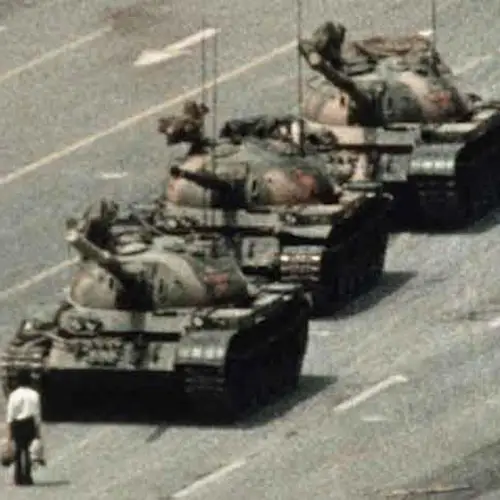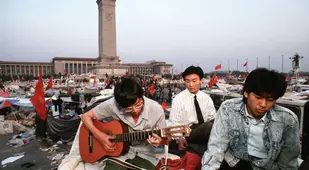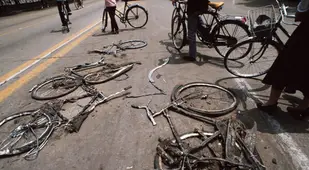Declassified reports and modern reexaminations reveal the widely covered-up horrors of the Tiananmen Square massacre that left as many as thousands dead in Beijing on June 4, 1989.
In the spring of 1989, thousands of Chinese troops entered Beijing’s Tiananmen Square and opened fire on unarmed protesters. As many as 1 million demonstrators — mostly university-age liberals — had gathered there in the weeks prior, campaigning for far-ranging political and economic reforms.
While the Chinese Communist Party (CCP) had silenced previous demonstrations, the violent retaking of the square on June 4, 1989, was so brutal that it has since become known as the Tiananmen Square massacre.
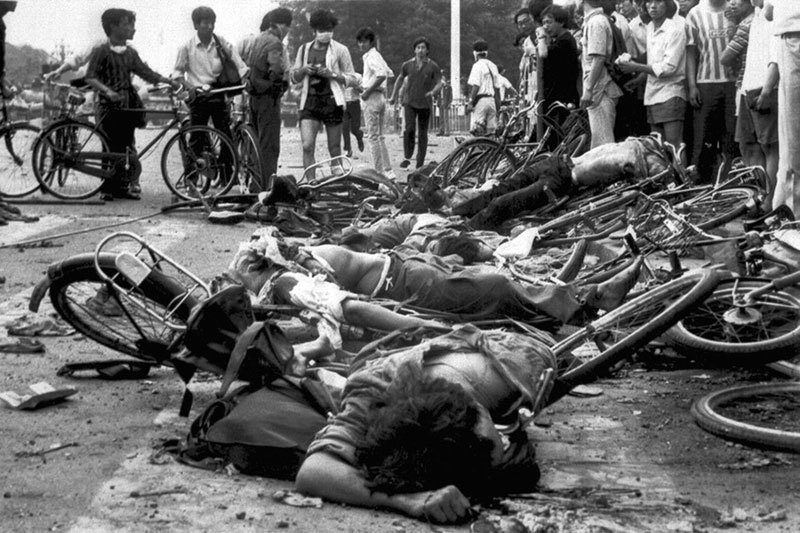
MashableBodies lie on the ground in the aftermath of the Tiananmen Square massacre.
We still don’t know how many people died there, as the Chinese government has done everything in its power to suppress and forget about the activities that took place that day. While official records say that 241 people lost their lives, most estimates suggest the real figures to be much higher.
A doctor at the time said that 500 lives were lost, while a radio announcer reported the Tiananmen Square massacre death toll at more than 1,000. Most recently, however, estimates have risen even higher.
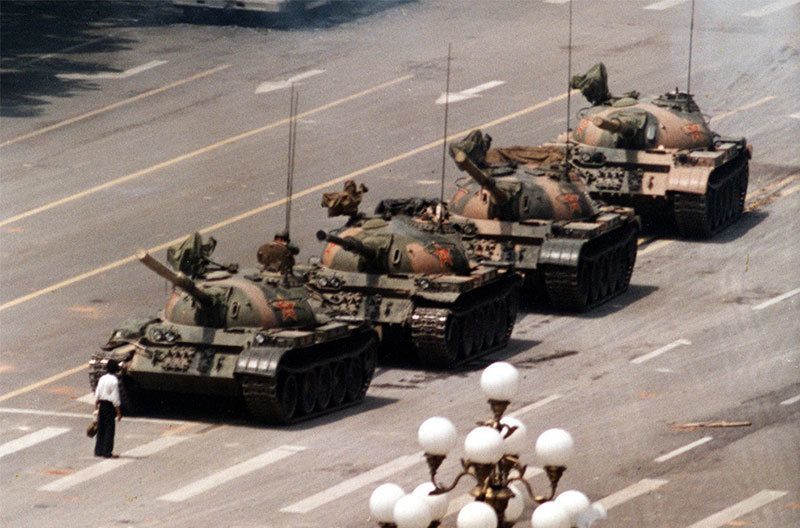
The New York TimesThe renowned “Tank Man” faces down a line of tanks during the Tiananmen Square protests of 1989.
According to The Independent, a secret British cable from the time alleged that a minimum of 10,000 people were massacred that day. Those who were merely wounded were simply bayoneted to death as they pleaded for mercy. Victims were then incinerated — and “hosed down the drains.”
Because much of our collective understanding of this historic violence and the surrounding Tiananmen Square protests of 1989 has been based on presumably false data — likely intentionally so — a reexamination of the event and its underlying causes is certainly in order.
The Chinese Communist Party Vs. “Bourgeois Liberalism”
Before the Tiananmen Square protests of 1989, the Chinese Communist Party (CCP) was desperate to quash what they saw as “bourgeois liberalism,” a broad phrase suggesting several kinds of resistance to the government’s strict and repressive political doctrine. Meanwhile, China’s educated youth were fed up with that very repressiveness as well as the country’s wealth being funneled to corrupt leaders at the top only for price inflations and poor job prospects to burden the masses.
Hu Yaobang, a general secretary in the CCP since 1980, had been encouraging the government to listen to its citizenry. He fought from within to sway his peers into supporting democratic reforms and providing the youth with more opportunities. By 1987, he was ousted, and forced to resign.
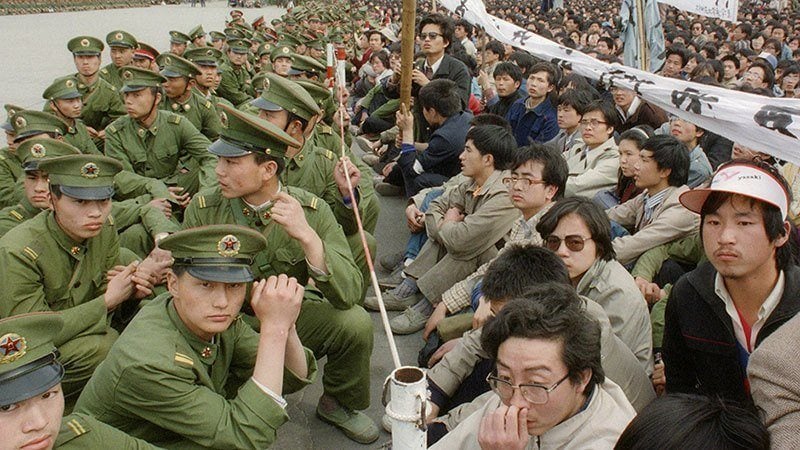
ABCDemonstrators square off against military personnel during the Tiananmen Square protests of 1989.
On April 15, 1989, he died — and became an immediate martyr to those fighting for his cause. Tens of thousands of students organized a protest at Tiananmen Square on the day of Hu’s funeral, April 22. While similar efforts were undertaken in cities across China, Beijing’s demonstration was the focal point of this national movement.
At the same time, countless journalists were in Beijing to report on Soviet leader Mikhail Gorbachev’s arrival that May. Soon after, the number of protesters in Tiananmen Square reached 1 million — and garnered global media coverage. In the beginning, only warnings to disperse were given by the government.
That would soon change.

International Business TimesSupporters of China’s Communist Party rally around their symbol while waving flags.
There was internal discussion regarding how to approach this growing issue, at first. Zhao Ziyang, a moderate who served as Hu’s successor, advised negotiating with the crowd. He wanted to offer them concessions and thereby assuage their anger and alleviate the situation.
Chinese premier Li Peng and his loyal base of hard-line supporters, however, overruled this approach. Meanwhile, the reactionary fear of anarchy held by elder statesman Deng Xiaoping prompted the use of force to eradicate the youth movement at all costs.
Before May turned to June, the government implemented martial law in Beijing. Troops were stationed throughout the city. But their path into Tiananmen Square was blocked by adamantly rebellious citizens, however, who made a statue called “Goddess of Democracy” their hub.
June 4, 1989: The Tiananmen Square Massacre
Armed troops and tanks made their way to the square on the night of June 3 and into the morning hours of June 4. They soon shot those who stood in their way and crushed those who wouldn’t move out of it. Thousands decided to leave and avoid confrontation, but many didn’t (including the widely-known “Tank Man” who stood in the street and faced down a row of tanks).
Early reports of the Tiananmen Square massacre were largely dismissed by China as necessary measures to combat “counterrevolutionaries.” The Western media, meanwhile, did refer to the government’s activities as a “massacre,” with the U.S. imposing economic and diplomatic sanctions.
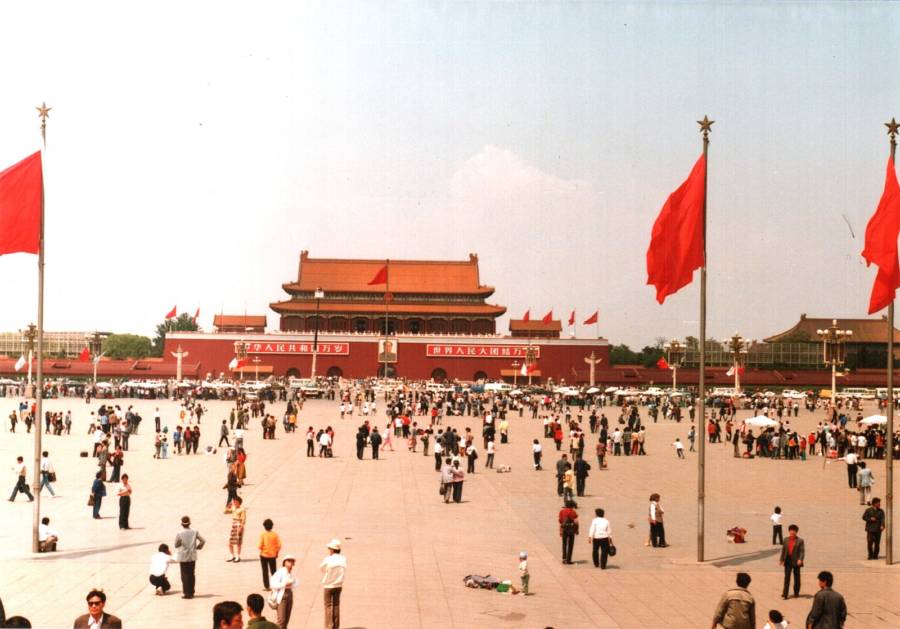
Wikimedia CommonsTiananmen Square in 1988, one year before the historic protests and subsequent massacre.
The CCP arrested thousands, imprisoned many of them, and even executed some. Soon, numerous protest leaders fled the country. Ziyang, who had encouraged his peers to find nonviolent solutions, was placed on house arrest and replaced.
And while the government admitted that 241 people died and some. 7,000 others were wounded, these numbers are widely disregarded as highly inaccurate by almost all sources outside of China today.
While public commemoration of the event is federally banned, and the government’s censorship makes for a tight grip on virtual discourse — a document declassified in 2017 has shed new light on how horrific the Tiananmen Square massacre really was.
What Really Happened During The Tiananmen Square Massacre
Freedom House, an independent organization dedicated to promoting freedom around the world, labeled China as "Not Free" in their 2014 Freedom in the World report, giving the country almost the lowest score possible in nearly every category.
A number of factors contribute to the country's lack of freedom, but most can understandably be traced directly to the Chinese government, which is strong and unyielding in its grip on its citizens.
In the current climate, decades after the Tiananmen Square massacre, there seem to be even fewer opportunities for people to speak out and enact change. The CCP has a monopoly on political power: organized opposition is illegal and independent political parties are strictly forbidden.

Leak SourceAn illustration referencing the high levels of censorship in China.
Those who participate in such organized efforts face jail time or bodily harm just for speaking their minds. The CCP's complete domination over the government and therefore the policies that guide the country ensure that only they can make the rules.
This stranglehold means that, even today, relatively little information is available about the Tiananmen Square massacre. However, British ambassador to China Sir Alan Donald wrote a secret diplomatic cable around 24 hours after the massacre, which was only declassified in 2017. The cable reveals stunning information previously unknown to most of the world, and likely, much of the country itself.
According to Donald, at least 10,000 people were killed. One of the Chinese army units was apparently so vicious that the former ambassador described them as "primitives" in the document.
The cable provides a hitherto unprecedented look at what really occurred that day.
Donald's cable has since found a new home in the U.K. National Archives. The former ambassador explained that his account stemmed from personal conversations from a "good friend" in China's State Council — the government's cabinet — who spilled the proverbial beans to Donald in confidence.
Donald said this source "has previously proved reliable and was careful to separate fact from speculation and rumor," making his recounting of the events of June 3 and June 4 highly credible.
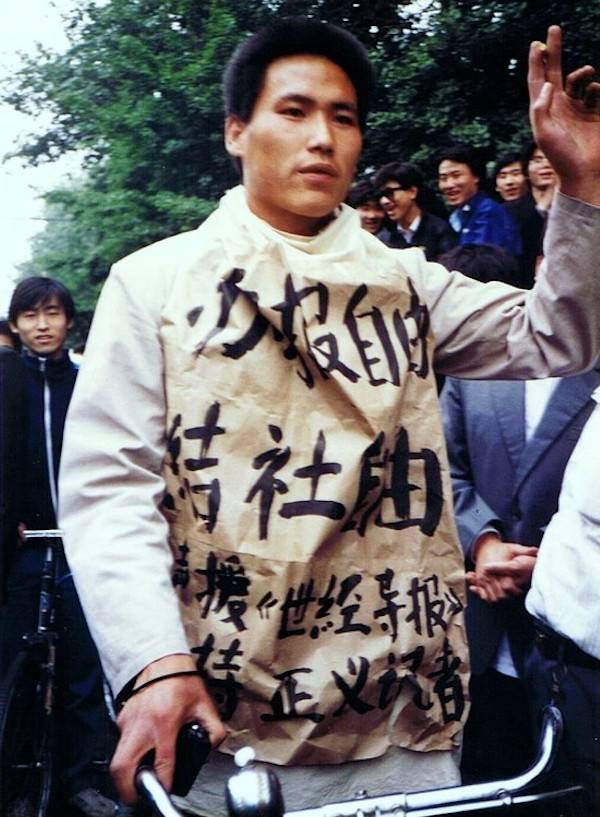
Wikimedia CommonsPu Zhiqiang, a student demonstrator during the Tiananmen Square protests of 1989. His shirt reads,"We want freedom of newspapers, freedom of associations, also to support the 'World Economic Herald', and support those just journalists." May 10, 1989.
Donald's cable to London described the "atrocities" against several thousand pro-democracy protesters as being undertaken by the 27th Army of Shanxi Province. He called this truculent group of soldiers "60 percent illiterate" and "primitives."
According to Donald and his trusted source, however, the troops that entered Tiananmen Square prior to the 27th Army were unarmed. This was an initial attempt to disperse the massive group of protesters without violence, as most were students, unarmed, and non-violent.
Unfortunately, this approach rapidly came to an end.
"The 27 Army APCs (armored personnel carriers) opened fire on the crowd before running over them," Donald wrote in his cable. "APCs ran over troops and civilians at 65kph (40 miles per hour)."
He explained that even though the CCP had provided protestors with a warning, even this small amount of leeway was underhanded, a lie, and viciously broken.
"Students understood they were given one hour to leave square, but after five minutes APCs attacked," Donald said.
The Horrors Of The Tiananmen Square Massacre
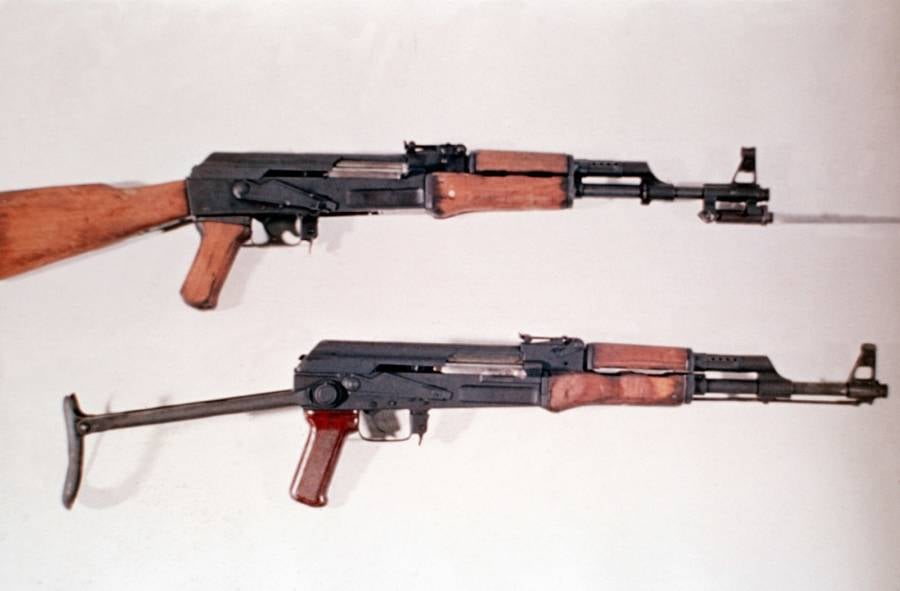
Wikimedia CommonsA type 56 rifle with bayonet and an AK-47. Both were used to kill unarmed citizens during the Tiananmen Square massacre.
The group of protesters remained steadfast, even in the face of annihilation. Shots rang out, innocents were struck, and people began to die. Nonetheless — there was power in numbers, and solidarity that allowed them to find courage — and thousands joined hands as bullets flew.
"Students linked arms but were mown down," wrote Donald. "APCs then ran over the bodies time and time again to make, quote 'pie' unquote, and remains collected by bulldozer."
As if this wasn't atrocious enough, the government's criminal and brutal activity that day got even worse. With no regard for the families of these victims, not to mention their identities, what was left of them was disposed of — in an unspeakably callous manner.
"Remains incinerated and then hosed down drains," Donald wrote.
Though it's remained unclear why exactly the government implemented such horrifically brutal measures on its non-violent population of young students that day (besides the obvious fear of having citizens force nationwide change), the former ambassador's cable seems to confirm that notion.
According to Donald, the violent attacks stemmed from a substantial portion of China's State Council that was afraid of civil war breaking out. The nationwide tides seemed to be turning and those in power would certainly not benefit from a freer populous. Thus, clamping down forcefully on any kind of dissent was vital to their interests.
On top of that, the recently declassified cable stated that the 27th Army was called into action that day specifically because of its disregard for anything but orders. The troops were "the most reliable and obedient," Donald explained.
"27 Army ordered to spare no one," he wrote. "Wounded girl students begged for their lives but were bayoneted. A three-year-old girl was injured, but her mother was shot as she went to her aid, as were six others."

Wikimedia CommonsA Chinese type 59 tank at the Beijing Military Museum.
The diplomat's sources also told him that "snipers shot many civilians on balconies, street sweepers etc for target practice." The declassified document also claimed that this excessive force continued even after the first wave of killings were completed during the Tiananmen Square massacre.
"1,000 survivors were told they could escape but were then mown down by specially prepared MG (machine gun) positions," wrote Donald. "Army ambulances who attempted to give aid were shot up, as was a Sino-Japanese hospital ambulance."
"With medical crew dead, wounded driver attempted to ram attackers but was blown to pieces by anti-tank weapon."
Donald's declassified cable even claimed that troops killed one of their own officers.
"27 Army officer shot dead by own troops, apparently because her faltered," he wrote. "Troops explained they would be shoot if they hadn't shot the officer."
Censored Reports To Hide The Bloodshed
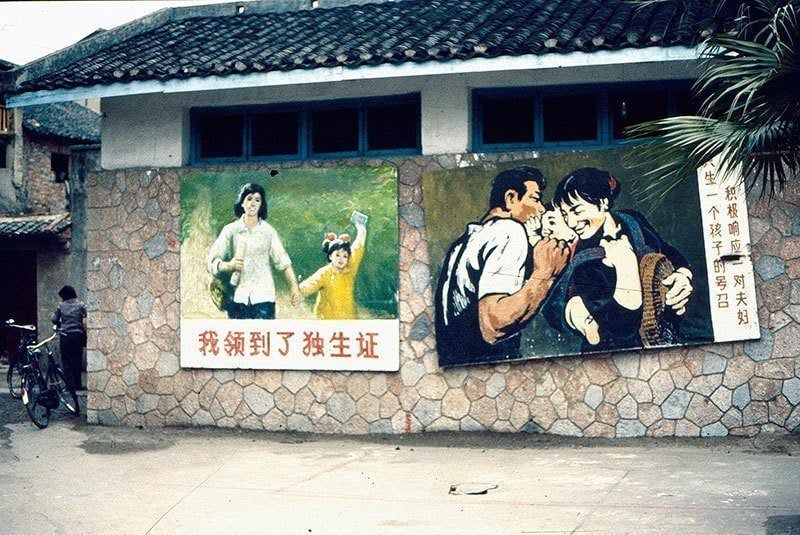
Glimpse From The GlobeChinese government propaganda in Tiananmen Square.
Of course, Chinese state TV was painting an entirely different picture. Before the army was deployed to wipe out protestors, government television was repeatedly broadcasting the following claims:
"Tonight a serious counter-revolutionary rebellion took place. Thugs frenziedly attacked People's Liberation Army troops, seizing weapons, erecting barricades, beating soldiers and officers in an attempt to overthrow the government of the People's Republic of China."
"For many days, the People's Liberation Army has exercised restraint and now must resolutely counteract the rebellion. All those who refuse to listen to reason must take full responsibility for their actions and their consequences."
The Chinese Red Cross estimated the death toll to be around 2,700 people on June 4, 1989. While this is far less conservative than the CCP's preposterous count of 200-300, it's far lower than Donald's account — which ended with a stunning figure.
"Minimum estimate of civilian dead 10,000," the final sentence of his cable read on the Tiananmen Square massacre.
The Legacy Of The Tiananmen Square Protests Of 1989 And Ongoing Chinese Censorship

The TypewriterTiananmen Square
Donald's now-declassified assessment of the Tiananmen Square massacre and the resulting death toll aligns completely with a confidential U.S. government file reported on in 2014. This document quoted a Chinese military source and said the CCP's own internal figures estimated the body count to be 10,454 people.
Unfortunately, China's oppressive government still restricts such free speech and the publishing of any substantial reporting that dares to threaten the powers that be. In the age of social media and unprecedented internet access, however, resourceful youths are continuously finding ways to thwart these efforts.
Perhaps we've now arrived at a place where the truth will leak out regardless of the establishment's wishes — in order to finally reveal the truth about the Tiananmen Square massacre and show the world what some governments are truly capable of.
After learning about the Tiananmen Square protests of 1989 and the ensuing Tiananmen Square massacre, read about the Jonestown massacre. Then, take a look at 33 disturbing pictures of the Mai Lai massacre, the war crime the U.S. got away with.



